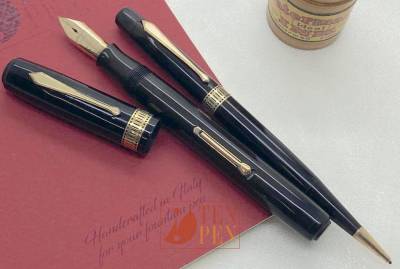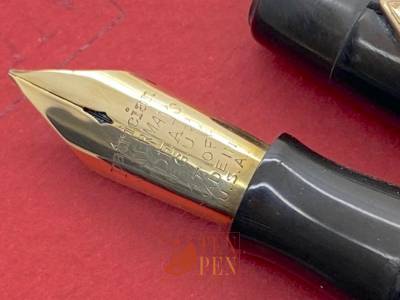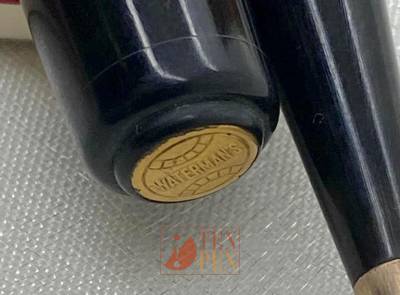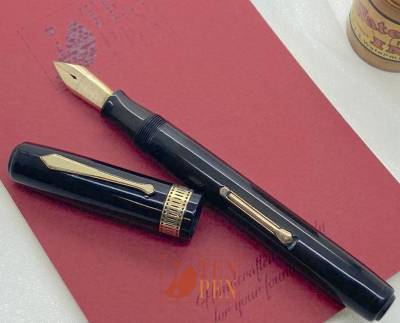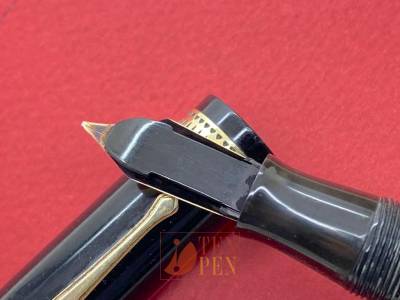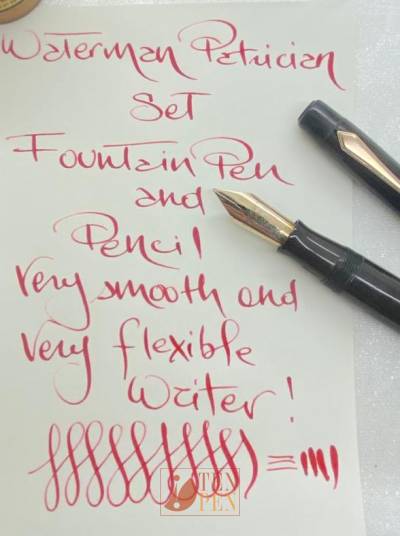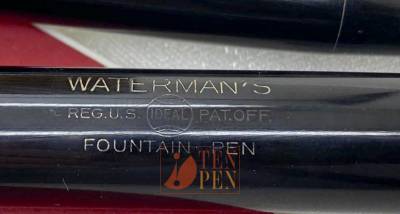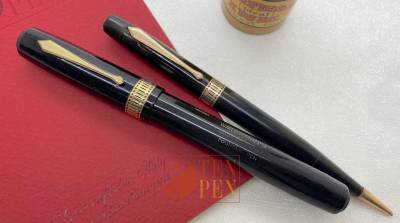WATERMAN PATRICIAN BLACK EBONITE SET- VERY RARE
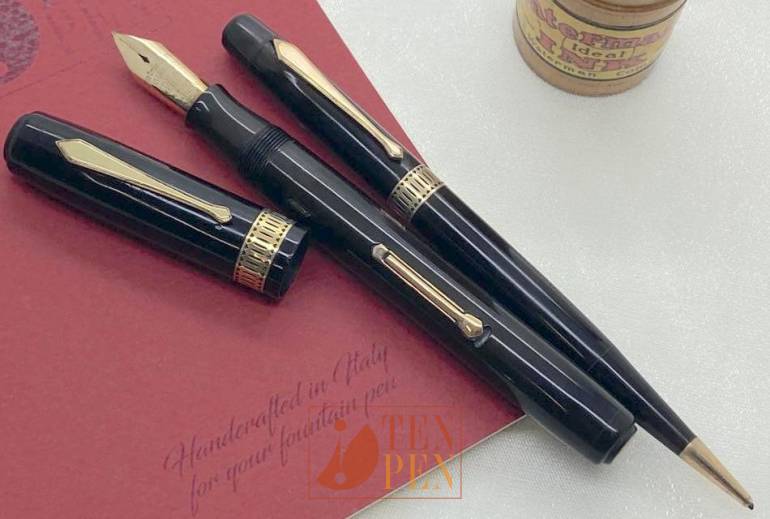
In 1929 Waterman introduced the Patrician line.
Waterman was the last of the big Four American pen makers to shift from ebonite to celluloid and it took a while before Waterman decided to let the taste for colorful celluloid pens spread into its line of pens.
They were perfectly aware that a change was needed and developed a new model which was meant to drive the Company out of the crisis. This new model was called Patrician. The model was quite rich and refined, and drew inspiration from classical designs.
The name Patrician itself made reference to the wealthy class in ancient Rome and many ads promoting the pens showed images of greek architecture and posh Roman women.
Paradoxically enough, this rich model was introduced in the dark time of Depression, when the US economy was going through its worst crisis ever.
The model had a pierced cap band, a nice metal shield on the bottom, and a very generous size.
But before manufacturing it in colorful celluloid colors, Waterman decided to test the market with ebonite.
The first Patrician pens were then manufactured in black ebonite, and then in colorful celluloid.
The range of celluloid colors included jet black, onyx, moss agate, nacre and turquoise, all extremely beautiful. The richness of the model seemed to express a reaction to the hard times of the economy during the Depression years.
The model was not so successful at the time but it became a definitive holy grail for many collectors in the decades to come.
Patrician pens are pretty rare and it is very difficult to find them in pristine condition; they are great writers and many of them have been heavily used. Colors like onyx and nacre and jade green are very light and finding them without discoloration is not common.
Patrician pens in black ebonite are even rarer, as hey were manufactured for a very very short span of time and are to be considered as a sort of test pens.
This Patrician set in black ebonite is in excellent condition with very limited signs of oxidization. The imprint on the pen barrel is excellent while the imprint on the lower part of the barrel is no longer visible.
The nib is EF ad it is very flexible.

